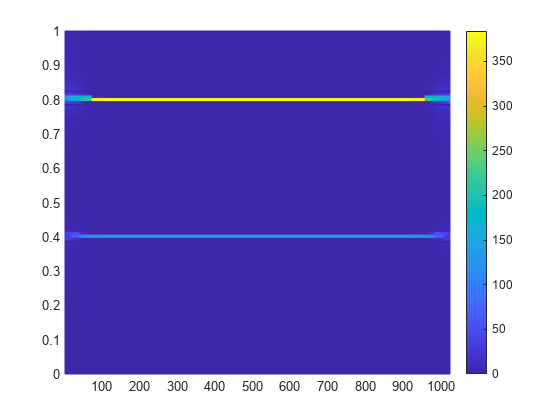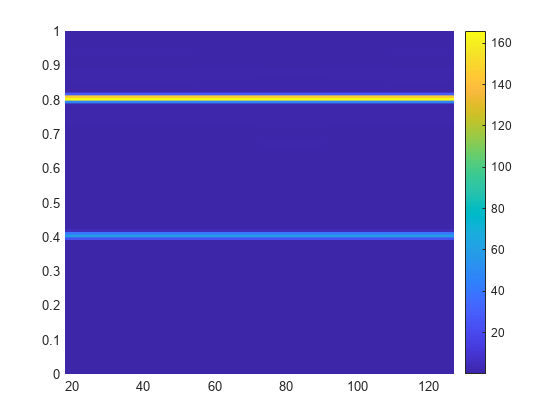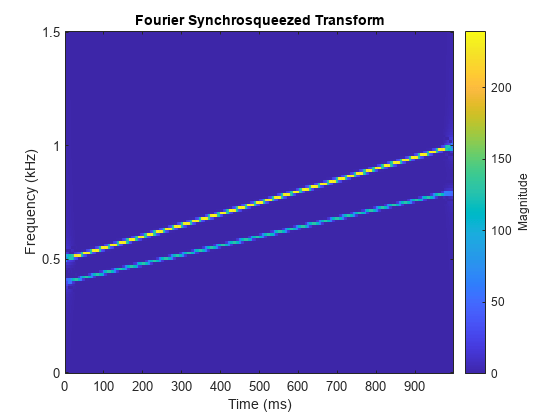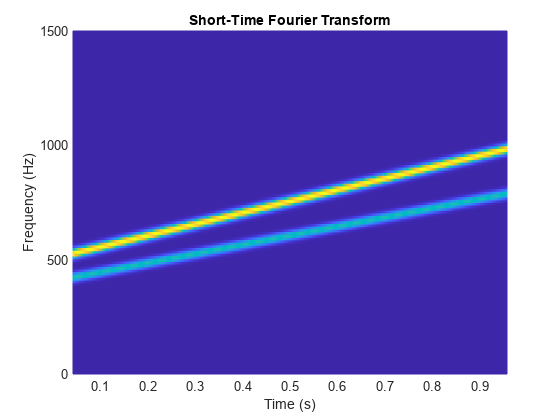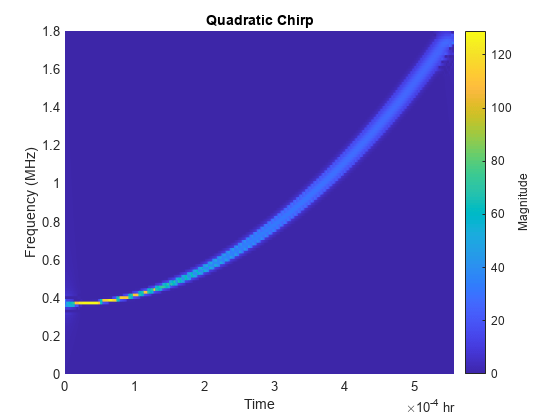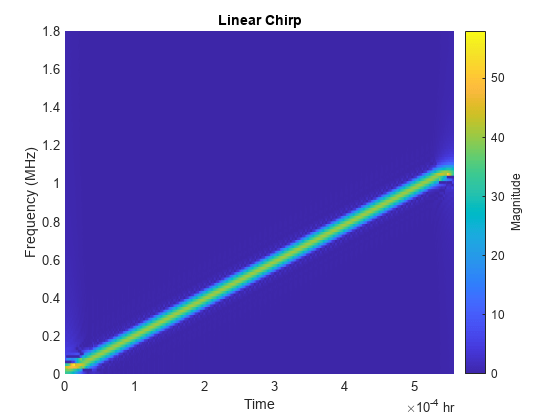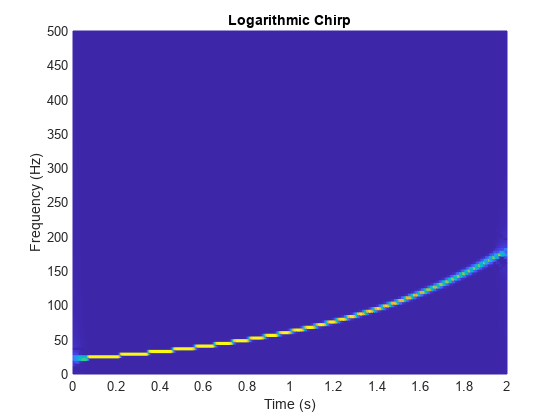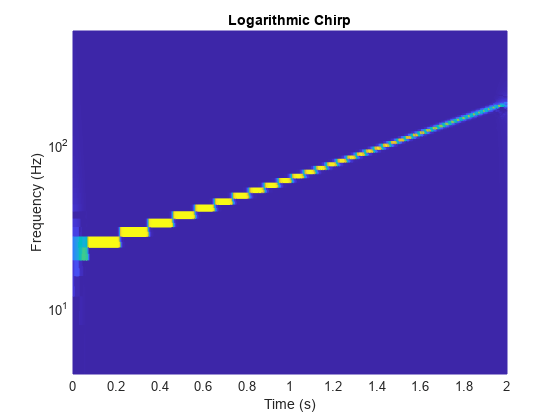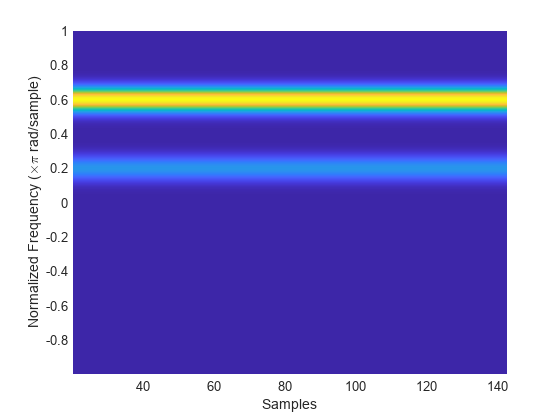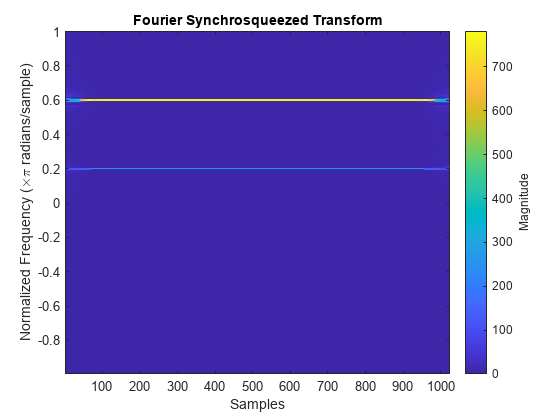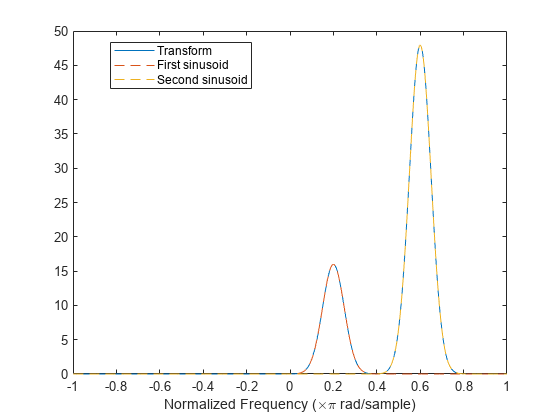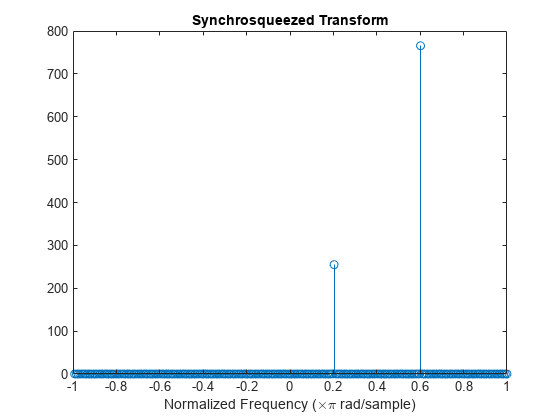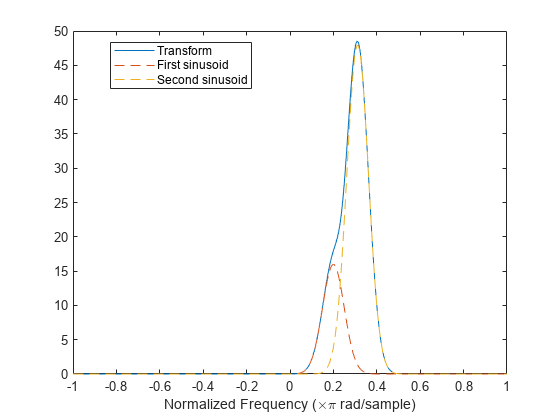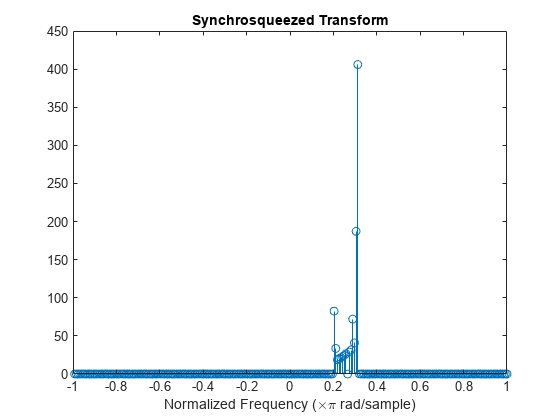Many real-world signals such as speech waveforms, machine vibrations, and
physiologic signals can be expressed as a superposition of amplitude-modulated and
frequency-modulated modes. For time-frequency analysis, it is convenient to express
such signals as sums of analytic signals through
The phases ϕk(t) have time derivatives dϕk(t)/dt that correspond to instantaneous frequencies. When the exact
phases are unknown, you can use the Fourier synchrosqueezed transform to estimate
them.
The Fourier synchrosqueezed transform is based on the short-time Fourier transform implemented
in the spectrogram function. For certain
kinds of nonstationary signals, the synchrosqueezed transform resembles the
reassigned spectrogram because it generates sharper time-frequency estimates than
the conventional transform. The fsst function determines the
short-time Fourier transform of a function, f, using a spectral
window, g, and computing
Unlike the conventional definition, this definition has an extra
factor of ej2πηt. The transform values are then “squeezed” so that
they concentrate around curves of instantaneous frequency in the time-frequency
plane. The resulting synchrosqueezed transform is of the form
where the instantaneous frequencies are estimated with the
“phase transform”
The transform in the denominator decreases the influence of the
window. To see a simple example, refer to Detect Closely Spaced Sinusoids with the Fourier Synchrosqueezed Transform. The
definition of Tgf(t,ω) differs by a factor of 1/g(0) from other expressions found in the literature.
fsst incorporates the factor in the mode-reconstruction
step.
Unlike the reassigned spectrogram, the synchrosqueezed transform
is invertible and thus can reconstruct the individual modes that compose
the signal. Invertibility imposes some constraints on the computation
of the short-time Fourier transform:
The number of DFT points is equal to the length of
the specified window.
The overlap between adjoining windowed segments is
one less than the window length.
The reassignment is performed only in frequency.
To find the modes, integrate the synchrosqueezed transform
over a small frequency interval around Ωgf(t,η):
where ɛ is
a small number.
The synchrosqueezed transform produces narrow ridges compared to the windowed short-time
Fourier transform. However, the width of the short-time transform still affects the
ability of the synchrosqueezed transform to separate modes. To be resolvable, the
modes must obey these conditions:
For each mode, the frequency must be strictly greater than the rate of
change of the amplitude: for all k.
Distinct modes must be separated by at least the frequency bandwidth
of the window. If the support of the window is the interval [–Δ,Δ], then for k ≠ m.
For an illustration, refer to Detect Closely Spaced Sinusoids with the Fourier Synchrosqueezed Transform.
